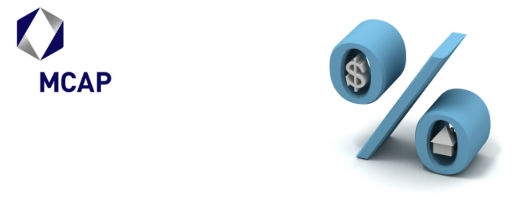Starting four weeks ago, our regularly-scheduled Mortgage Monday blog posts began featuring a 4-part series courtesy of MCAP on how and why mortgages are priced the way they are (the series began with Part 1 four weeks ago: The Bond Market and Fixed Income Yields – How Does it Really Work?, followed by Part 2 three weeks ago: Risk? What Risk? Mortgage Investment From the “Buy Side”, and Part 3 two weeks ago: Fixed Rate Mortgage Pricing – Getting Ahead of the Curve). We wrap up the 4-part series this week with a look at variable rate mortgage pricing. If you have some basic financial knowledge, it shouldn’t be overly complex (that being said, these posts aren’t for beginners, either). Either way, if you have any questions, ask them in the comments below and I’ll do my best to answer them.
Part 4 – Variable Rate Mortgage Pricing – What in the World is Going On?
Variable rate mortgages have been very popular for several years in Canada – at times representing up to three quarters of new mortgage production. One reason is the ongoing low rate environment which has made them comparatively cheap. The data shows that they have generally been the better bet as long as borrowers could live with their inherent uncertainty.
The government bond market directly influences the fixed rate mortgage market. The variable rate market moves according to a different set of factors – some well-known and simple; others much more complex and confusing.
First, the simple ones: News organizations widely report on the results of The Bank of Canada’s meetings every six weeks. In these meetings, the bank decides, among others things, on what is known as “The Bank Rate”. The Bank Rate is the rate set for Canadian banks in short term lending to each other. The Bank Rate is currently 1%. Canadian banks widely publish their “Prime Rate” which is generally in the range of 2% above the Bank Rate. The Prime Rate is the rate charged by banks to their best customers for unsecured lines of credit. It also serves as the reference point for other variable rate lending products – like mortgages. The Prime Rate is currently 3%. When the Bank of Canada changes the Bank Rate, Canadian banks change their Prime Rate and pass the changes on to borrowers with variable rate loans.
The Bank Rate has been at 1% and the Prime Rate has been at 3% since May, 2011. But variable rate mortgage pricing has changed considerably in recent months. Why? Lenders have been changing the price (increment or decrement – ie, plus or minus) of variable rate mortgages relative to the Prime Rate. In the last six months, we have seen variable rate mortgages become much more expensive – by about three quarters of a per cent. Why? Well, here is where it gets complicated, convoluted and murky.
Contrary to some theories, there is no conspiracy on the part of the banks to drive consumers into one kind of mortgage product over another. The European debt crisis has washed up on our shores and is the main reason why Canadian lenders have raised variable rate mortgage prices. Very simply, the world’s financial system is fully intertwined and banks borrow from each other all the time. This means that Canadian Banks, while generally not having direct exposure to Greek debt for example, have exposure to other banks which probably do themselves have exposure to debts which may not be fully repaid. Banks around the world find that their “cost of funds” or their price of borrowing from each other has increased. Those increased costs have been passed on to Canadian consumers wanting new variable rate mortgages.
The international financial jitters, like the ones in play now, affect the variable rate market in particular because of their impact on a strategy used by banks called “matching”. In the fixed rate world, traditional banking practice would be to accept 5 year deposits (such as GIC’s), lend those funds in the form of 5 year mortgages, and earn profits on the difference between what is paid on the deposits and what is charged on the mortgages. Maturities (in this case, 5 years) are matched. In the variable rate world, matching is always, not surprisingly, more difficult. The current uncertainty makes matching for variable rate loans even more challenging. The result is higher prices charged to consumers.
There are also new international financial reporting regulations in place which are creating further uncertainty around capital requirements for banks and these are driving costs up as well. Although Canada’s banks are very stable, they are being swept up in the international turmoil – at least in the short term.
We live in a world with one financial system. The fact that increases in variable rate mortgage pricing in Canada are a result of the European debt crisis is the best evidence of this.
